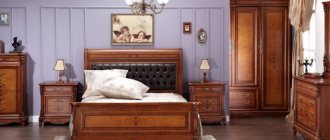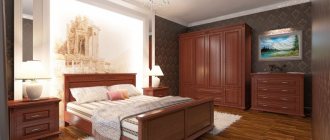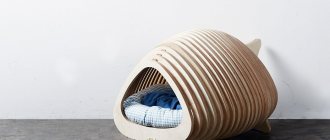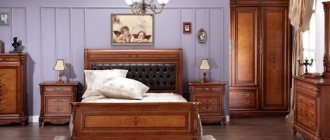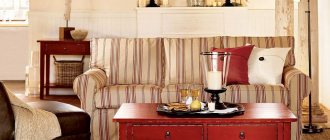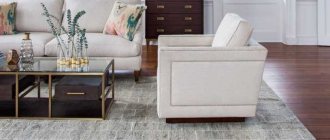Antique furniture: a choice for true connoisseurs of beauty. The appearance of antique and semi-antique furniture in the interior of a home occurs in various ways: someone purchased something they liked, someone inherited it.
But in order for antique furniture to look in harmony with other pieces of furniture in the interior of the room and correspond to its status, it is necessary to take into account the main rules for placing antique furniture.
What is vintage?
Today, the phrase “vintage style” is used mainly as a designation for something old, but at the same time high-quality and beautiful.
In fact, the original meanings did not concern beauty or decor at all. Vintage (from the French vintage) is a good vintage wine of a certain age. The British use the same word to describe the process of harvesting grapes.
In the context of fashion, style, and design, vintage refers to old, well-preserved things (however, the reference to aged drinks remains here too).
It is the “aging”, or rather the age of items in vintage style, that distinguishes them from retro. The second word is modern imitation of antiquity. By the way, the era is another difference between vintage and retro style. In a general sense, vintage is older, covering the pre-war period (late XIX-early XX), retro - post-war, i.e. second half of XX. They also look different: vintage is still a more classic style, while retro developed along with bright art deco and modern modernism.
Is it possible to fit Soviet furniture harmoniously into a modern interior?
Yes, and more than that. In classic and retro styles, such items will definitely come in handy. Plus, some old sets are also used in neat, minimalist interiors, free from domestic excesses.
The main advantage of such furniture is that it helps preserve the emotions associated with one’s home. At the same time, designers also often appreciate it - for its quality and some special details. Let's talk about this in a little more detail.
Style Features
Vintage interiors have special differences, which together form this direction.
Antique details
Vintage furniture and other furnishings from the past always have an interesting history behind them, which they convey to the surrounding space. Perhaps this is why vintage interiors in houses seem more lively, cozy, and elegant, in contrast to the plastic fashion of the 2000s.
Natural materials
Since in pre-war times there was no artificial plastic or other analogues, the interiors were filled with real wood or wicker, forged metal, and natural textiles.
Aged items
Deliberate transformation of elements into a vintage style is not required, but shabby antique items are necessary. At the same time, a shabby look is given not by a new, but by an initially old object - often during restoration, functionality returns to furniture or decor, after which the artist adds a “patina of time” using paint and a brush.
Check out our selection of ideas for remaking Soviet furniture.
How to do the conversion yourself
Over time, interior items lose their original color, being exposed to fading and other adverse environmental factors. Various defects appear on their surfaces in the form of stains, abrasions, roughness, chips and cracks. Self-restoration of old things will allow you to significantly save money on the purchase of new furniture.
Restoring antique objects always begins with a thorough wiping, and, if necessary, a complete washing of the item being restored and subsequent drying. This allows you to completely eliminate dust and mold from surfaces. A careful inspection of the product will reveal all chips, scratches, cracks and other defects.
To replace elements that cannot be restored, you need to select wood of an identical species; restoration made from old boards will look even better.
The main methods for eliminating defects are collected in the table.
| Defect | Restoration method |
| Shallow small cracks | Rubbing with mastic |
| Scratches that penetrate deeper than the paint layer | Tinting with iodine solution followed by polishing the defect area or the entire surface |
| Deep cracks | Filling cracks, laminating and polishing the entire surface |
There are other ideas for restoring deformed surfaces:
- You can decorate old furniture with appliqué using the decoupage technique. It is worth decorating the product with images that will harmoniously fit into the interior of the room and will be combined with other decorative elements. To do this, use pieces of wallpaper, old newspapers, geographical maps, special napkins for decoupage, or simply printed inscriptions. They are glued to the surface and coated several times with clear varnish. This will not only fix the image, but will also protect the furniture from moisture.
- If old furniture is covered with many cracks, chips, scratches, you can decorate it using ornaments. The flaws will be difficult to see under the pattern. To simplify the task, you can buy a ready-made stencil or order its production in a workshop.
- Cover dark wood with white varnish to achieve a “bleached oak” effect. After sanding, the surface is varnished using the dry brush technique, deliberately leaving gaps and unpainted areas.
- Re-dyeing. In this case, it is not necessary to completely remove the old coating. It will be enough to clean the surface from dust, degrease it with home remedies, sand it a little, and then prime it with an adhesive primer and apply 1-2 layers of paint.
- For the restoration of upholstered furniture, it is advisable to use reupholstery. You can buy, knit or sew new covers for chairs and armchairs.
Restoring antique items on your own will not only save the family budget, but will also enliven the existing interior - the room will sparkle with new colors.
Color palette
Vintage cannot be called “flashy”: calm, neutral colors are used in interior design. White, beige, gray, colored light pastel.
Delicate shades in the decoration are necessarily diluted with floral motifs: fabrics with floral prints are used for upholstery or decorative textiles (pillows, bedspreads, curtains), wallpaper is glued to the walls.
There shouldn’t be a lot of colors; their task is to place accents.
Where to buy restored and high-quality Soviet furniture?
Kvartblog found those who can make a new stunning piece of furniture out of an old “tired” chair. Interesting upholstered furniture, draped in a modern way, is offered by Stoolstory.
For those who love collectible vintage sets, made with talent and love and skillfully updated, the choice is provided by designer Maria Volodatskaya.
Decent Soviet furniture is worth storing and restoring. The main thing is to focus on the latest convenient interior design solutions!
What finishing materials are best to use?
To understand what a vintage interior should look like, just look carefully at the photographs of the rooms.
Ceiling
Standard white – whitewashed or painted. For decoration, stucco molding is used: cornices, rosettes, moldings, bas-reliefs.
Walls
For finishing, paint is used or wallpaper is glued. A monochromatic color scheme in light colors predominates. Often decorated with horizontal moldings at a level of 100-120 cm from the floor. Wallpaper is acceptable with a simple print - horizontal (stripes), floral.
Floor
Oddly enough, it is he who creates the vintage atmosphere. You're lucky if the apartment has old parquet - all you have to do is peel it off, re-coat it with a protective agent and you can use it. If imitation is required, look for tiles or laminate with signs of wear.
The photo shows a light ceiling finish and moldings on the walls
Conditions of care
In order for antique furniture to retain its presentable appearance for a long time, it is necessary to properly care for it. One of the most important conditions for its safety is a categorical ban on wet cleaning. Periodically wipe the surfaces with a dry cloth, after which a special composition is applied that repels dust. To clean carved decorative elements from dust, use a special brush or brush with natural bristles. Bronze, brass and metal inserts are treated with cotton pads soaked in ammonia.
It is strictly not recommended to move antique items on the floor. This can lead to paint chips and irreversible damage to individual elements that will be impossible to repair.
Special requirements must be placed on the conditions under which antique items are kept. Their location near sources of heat and moisture is unacceptable. Direct sunlight also has a destructive effect on them.
Features and characteristics of German furniture, popular manufacturers
Dry cleaning of furniture
Use of special protective equipment
Recommendations for selecting vintage furniture, appliances and plumbing fixtures?
In order for the vintage in the interior of the apartment to turn out authentic, you will have to visit all the flea markets and flea markets in the city, spend a lot of time searching for the necessary details on classifieds websites and in groups of like-minded people. But it's worth it!
Furniture
Characteristic features common to all vintage-style furniture:
- Strength. Wooden cabinets and chests of drawers were made from solid wood.
- Decorative. The products were decorated with carved details.
- Epochal. If you doubt whether individual elements will fit together, check the production date. Things made at the same time harmonize perfectly.
To prevent the apartment from looking like a museum, select 1 main detail in each room, and match the rest to it:
- vintage in the bedroom is guaranteed by a wrought-iron bed;
- a wooden buffet or sideboard is appropriate in the kitchen;
- A vintage-style living room will be complemented by a massive chest or rocking chair.
The photo shows a vintage desktop
Technique
Since the main modern technology arose after the middle of the 20th century, vintage products are not provided in principle. So instead of styling a modern refrigerator or stove, just go for something that's inconspicuous.
In the kitchen, a built-in is appropriate; in the living room, the TV can also be hidden behind the doors - otherwise the plasma panel can destroy the entire perception of style.
Plumbing
Fortunately, furnishing your bathroom and toilet is not difficult. Manufacturers have separate “vintage” lines, which include:
- clawfoot baths;
- metal enameled or porcelain sinks on shaped stands;
- toilets with high hanging tanks;
- carved figured faucets.
A mirror in a beautiful copper frame and suitable accessories (brush holders, paper holders, shelves) will help complement the atmosphere.
When did the best furniture appear in Soviet history?
The first Soviet interiors began to appear in the 1920s and 30s, and these were communal apartments with very simple furnishings. Bulky, roughly designed “Stalinist Empire style”, but noticeably reliable cabinets and tables - this is what minimalism looked like then.
Sets from the 1930s-50s are more reminiscent of the usual Soviet style, ostentatious, authentic. Everything created then indicated the prosperity of the houses and was carefully preserved. Therefore, the living room could combine the incongruous: a massive wall, ostentatiously filled with books and crystal, compact curved chairs, a sofa bed.
But items from that time are already more compact and convenient, adapted for small apartments. And at the same time, they are also characterized by the strength of a real solid mass.
And the best legacy that these years have left:
- Viennese (the same ones with curved backs) chairs, armchairs, tables - lightweight cabinet furniture on thin high legs, from the countries of the Eastern Bloc, stylish even by the standards of our time.
But not only that!
The rooms of the 1970s and 80s were already more individual, sometimes furnished under the influence of disco. The character of those interiors was created not by furniture, but by design details - new posters, records, bright colors. And laconic sets came into use, which opened up space for design ideas - coffee tables, low armchairs.
In typical furniture of this era, parts made of plastic and chipboard appeared - beautiful, cheap and, alas, impractical in comparison with an array of materials.
What decor and textiles can be used?
Adherents of vintage-style interiors should not neglect little things like decor. Decorations transform a space and set the mood.
Excellent options suitable for the direction:
- porcelain tea set;
- napkins, tablecloths with delicate embroidery;
- family photos in beautiful frames;
- metal figurines;
- wall or table clock with Roman numerals;
- black and white cityscapes;
- curtains with frills, tiebacks;
- antique candlesticks.
Where does retro style fit?
This style is popular in large cities and is widely used to decorate apartments, cafes, hotels, and cinemas. Interior design for a restaurant in retro style or interior design for a cafe means brightness, original features, elegant bar stools, tables, smooth glossy surface of cabinets, bar counters.
This style is popular in large cities
The interior of a retro-style apartment is comfort, ostentatious charm and a cheerful mood. Furniture of unusual shapes, beaded curtains, antique figurines, posters with heroes of the past, bright colors - all this creates a special retro-style atmosphere - bright and warm.
Lighting options
At the time of the birth of the style, artificial lighting was just coming into homes. The light was dim, incandescent lamps interspersed with candles - so the overall picture can be called shaded.
If the task is absolute compliance, focus on a soft, warm, diffused glow. No white spotlights.
The photo shows vintage lamps
Chandeliers either have lampshades made of fabric with a print, or chic wrought iron ones, with “cup holders” reminiscent of candlesticks. One point per room will definitely not be enough, so in addition to the ceiling lighting, add floor lighting (floor lamp with frills), table or wall lighting (sconces for candelabra).
What to consider when choosing antique furniture
If you know the intricacies of buying antiques, the risk of buying a pig in a poke and running into a reproduction instead of the original will be lower. First of all, pay attention to the appearance of the item: usually, the fewer defects the furniture has, the higher the cost. For example, an antique cabinet in perfect condition may be considered a collector's item, so it will be worth more than a similar item with wear and tear, which is of less value to sophisticated collectors of curiosities.
At the same time, abrasions and minor mechanical damage on cabinet furniture made of wood are considered normal. The same goes for faded or darkened areas on upholstered furniture, carpets and antique tapestries. In general, materials are an important characteristic for antique furniture. Take a closer look at options made from precious wood and models with gilding, lacquer coating and unusual fittings.
Also, the cost of an antique is influenced by its uniqueness: the fewer copies were produced, the higher their attractiveness. Objects with history are also especially valued. If the item belonged to famous personalities or served as a backdrop for significant events, this may affect its value.
What does vintage look like in the interior?
A living room in vintage style resembles a hall, or more precisely, a room in a rich house, intended for receiving guests. If possible, install a fireplace and plenty of seating: sofas, couches, armchairs, ottomans.
A vintage bedroom should evoke a feeling of softness from the threshold: a high feather bed with beautiful linens, a canopy around the perimeter, a banquette at the foot.
The photo shows aged bedroom furniture
A vintage kitchen resembles a classic one: light (white, cream) furniture with carved decor, beautiful dishes, delicate floral textiles.
Children's rooms deserve special attention: the rooms can look solemn and reminiscent of a royal person's bedroom, or they can look discreet - with wooden furniture, light walls, toys in muted colors.
The photo shows a children's room with vintage details
Vintage in a modern apartment is a controversial choice. But if you really like the atmosphere of the pre-war era, embody it!
Options for updating old furniture
Depending on the condition and appearance of the item, it can be revived in one of the following ways:
- paint;
- reupholstery;
- replace fittings;
- cover surfaces with simple patterns using lace and other available materials;
- cover the body with self-adhesive film with various patterns or a single color;
- use decoupage technique;
- age furniture using professional techniques (craquelure, patina);
- order furniture covers according to individual measurements;
- decorate the upholstery of upholstered furniture with buttons, seams and other decorations.
Updating an old buffet
Important! Before painting or updating furniture in other ways, it is worth washing it thoroughly, cleaning it, getting rid of old odors and drying it thoroughly. If necessary, before finishing the surfaces are sanded, puttied and coated with a special primer.



